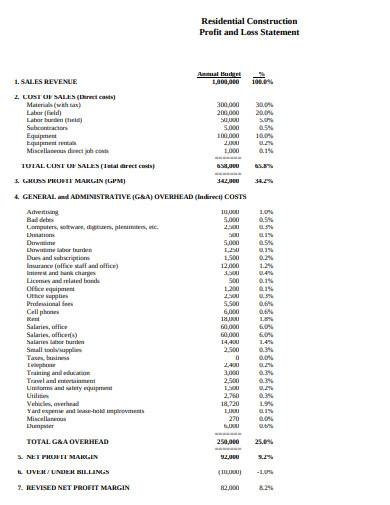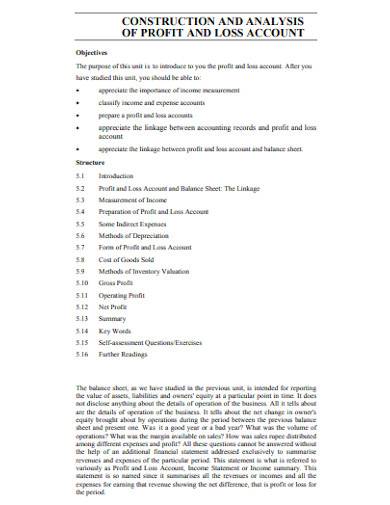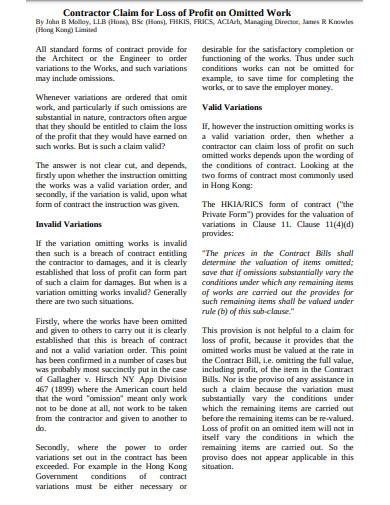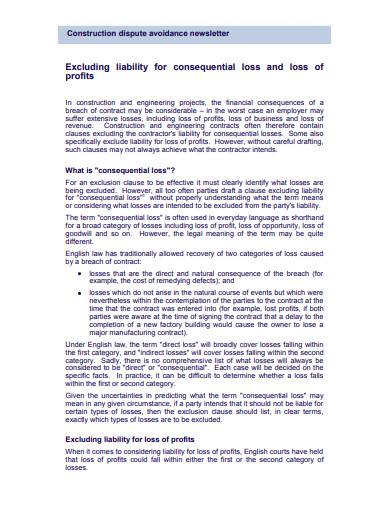Building infrastructure isn’t a cheap concept; even the construction of an average home can cost almost $ 300,000. However, with the public’s general need for establishments, this means that a constant demand for infrastructure will exist. This phenomenon leads to a monetary cycle of income and expenditure that dictates the cash flow of the construction industry; as such, proper budget management is crucial to a successful project.
Profit and Loss Statement Template
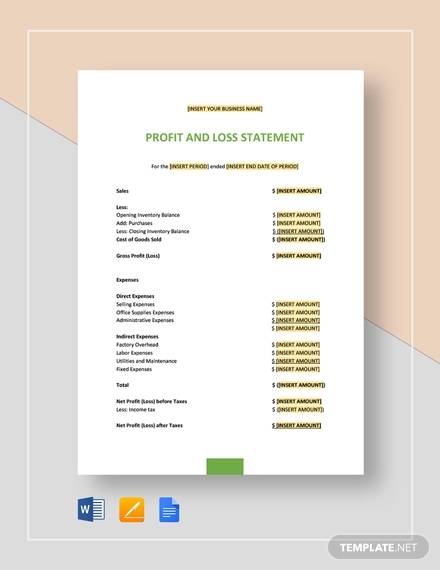
Free Profit and Loss Statement
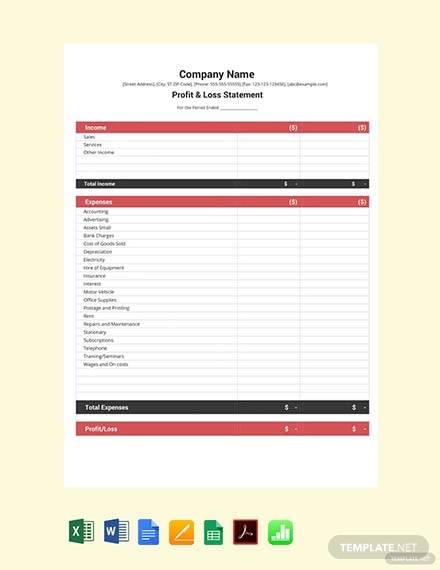
Free Profit and Loss Statement For Small Business Template
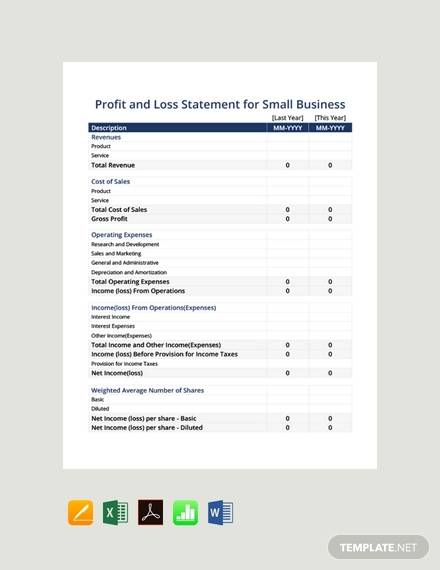
What is Construction Profit and Loss?
A construction profit and loss is a financial document that contains information on a construction project’s earnings, expenses, and costs. To put it in Layman’s terms, it’s a record of everything earned, spent, and gained. This financial statement is a critical document as it is needed to keep track of where project money goes. However, just like any other financial statement, a profit and loss are only effective if properly done—i.e. make sure it’s free of anomalies and “unsolicited” edits. With that in mind, make sure that you properly check and balance your documents to ensure an accurate financial history.
Not to imply anything, but when you’re dealing with hundreds of thousands of dollars, expensive resources, and safety procedures, you want to make sure that every cent is accounted for. After all, a project’s budget is the determiner of its success, so use it wisely. This, however, doesn’t need a complicated system as you can use multiple financial spreadsheets found online.
A Financial Fact
Whether the context is about a married couple, a business, or a construction project, tracking your expenses help control your financial status. A small digression from infrastructure, budgeting is an essential part of any industry; however, it’s a more convenient practice to say than do. Financial tracking gets particularly tricky when you have to deal with construction budget proposals, pricy resources, and your crew’s salary.
When chewed, down to the bone, do the same financial principles in business apply to infrastructure? Yes, they do. As a matter of fact, the reason why most small businesses fail is due to a lack of financial preparedness—something that construction projects are prone to. To give you more perspective, some of the expenses in construction are employee wages, heavy equipment, management services, architectural design, and other utilities. With that being said, you can easily keep a tab on these matters with the use of a construction profit and loss sample.
Construction Profit and Loss Samples
After all that talk about a profit and loss’ uses and benefits, you’re probably wondering where you can find these documents. Well, for your comfort and convenience, here are some sample templates for you to choose from.
1. Residential Construction Profit and Loss Statement
2. Construction And Analysis Of Profit And Loss Account
3. Construction Contractor Claim for Loss of Profit on Omitted Works
4. Construction Liability for Consequential Loss and Loss of Profits
How to Create a Construction Profit and Loss Document?
Nothing involving money is easy—which probably explains why accounting is such a difficult degree program. However, add unto that construction particulars like equipment agreements and safety precautions and you have yourself a daunting challenge to draft. Imagine how convenient it would be to have a few drafting tips to help you out, right? Well, here they are:
1. Account for All Expenses
Whether it’s numbered on a budget plan, a briefcase full of cash, or the company credit card in your wallet, always record project expenditures. Make it a habit to request for receipts, purchase orders, or any form of documentation as this will make jotting down data more convenient. Also, make sure to keep these papers in a safe place so you don’t lose them. The last thing you want is finding out that an item of expenditure wasn’t recorded in the middle of accounting for your construction profit and loss.
2. Understand the Formula
The formula itself isn’t complicated; however, do not mistake its basic nature for something unimportant. First, and foremost, you need data on all the expenses made and all the income (or budget, in this case) generated. After that, you grab a calculator, pen, and paper and you add up your total expense and income. Once that’s done, you subtract the total expense from your total income to get the total profit. With a construction income statement, this helps you determine how much of the budget has been spent on, what and where the money was used on, and how much do you have left for the obligatory celebration party.
3. Record All Findings
How much was spent on the cement trucks? How about your workforce, what is the effect of their wages on the budget? Are there better alternatives to your resources? Are cheaper brands better? These are the questions that a construction profit and loss can answer—which then leads to more cost-efficient budget planning. Hence, it’s best to take your purchase orders and agreements and document your expenditures and gains. The last thing you want is to find yourself spending more than the allocated budget and then involuntarily become a sponsor for its completion.
4. Recognize Your Cashflow
Once you have your complete data analysis, you can better understand your cash flow. What this means is that you can better calculate your assets, make more cost-effective and cost-efficient decisions, and improve the probability of the project’s success. When you have a grasp on your money’s whereabouts, managing your budget becomes less hassling and more convenient, and finance-induced panic is a less likely scenario to happen.
An old saying has stood through time immemorial; “knowledge is power,” and this is a fact in the construction industry. The knowledge you gain from a simple budget calculation gives you the power to ensure your construction project’s success. From ambitious structures such as China’s “Bird’s Nest,” to humble rural homes, to serene villages and towns, understanding the green-colored limiter of your ideas and building plans keep your ambitions realistic and your wallet away from hidden overcharges.
Related Posts
-
FREE 12+ Construction Safety Samples in MS Word | Google Docs | PDF
-
FREE 10+ Construction Case Study Samples in MS Word | Google Docs | PDF
-
FREE 13+ Construction Finance Samples in MS Word | Google Docs | PDF
-
FREE 26+ Construction Field Samples in MS Word | Google Docs | PDF
-
FREE 28+ Construction Tracking Samples in MS Word | Google Docs | Excel | PDF
-
FREE 14+ Construction Lease Samples in MS Word | Google Docs | PDF
-
FREE 12+ Construction HR Procedure Samples in MS Word | Google Docs | PDF
-
FREE 10+ Construction Expenses Samples in MS Word | Google Docs | Excel | Pages | Numbers | PDF
-
FREE 5+ Construction Business Incorporation Samples in MS Word | Google Docs
-
FREE 13+ Construction Cost Breakdown Samples in Excel | PDF
-
FREE 10+ Construction Scope of Work Samples [ Management, Cleaning, Demolition ]
-
FREE 10+ Construction Bid Estimate Samples in MS Word | MS Excel | Google Docs | Google Sheets | Apple Numbers | Apple Pages | PDF
-
FREE 10+ Nonprofit Bylaws Samples in PDF
-
FREE 9+ Small Business Profit and Loss Samples in PDF
-
FREE 4+ Nonprofit Marketing Strategy Samples [ Digital, Email, Social Media ]

